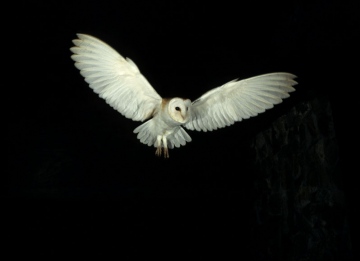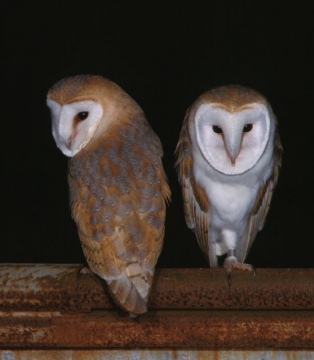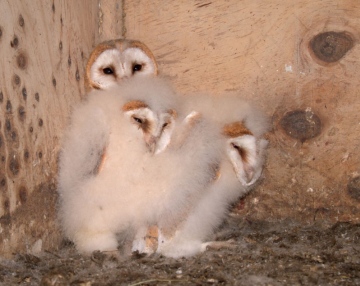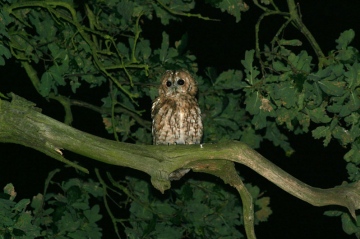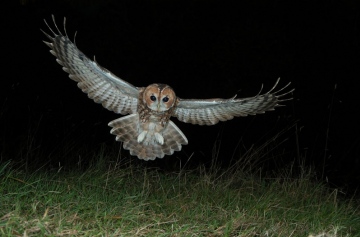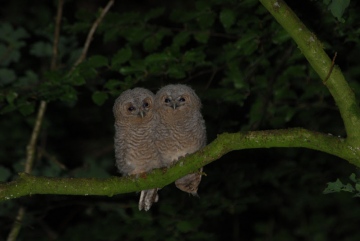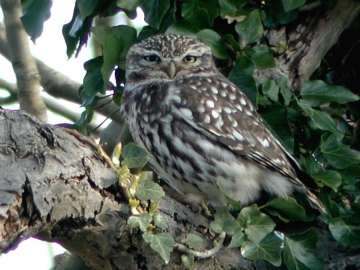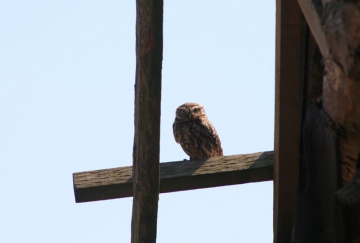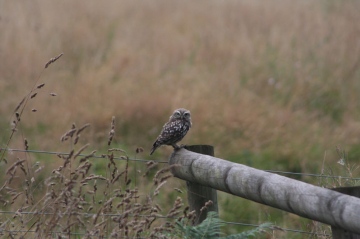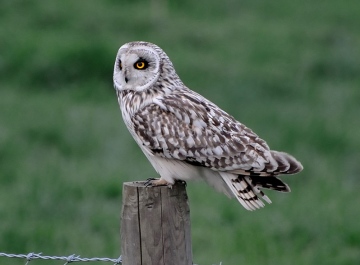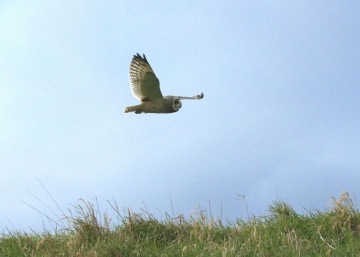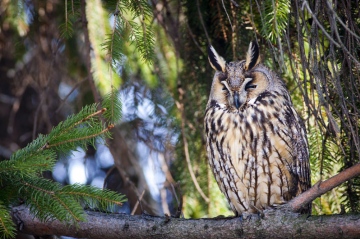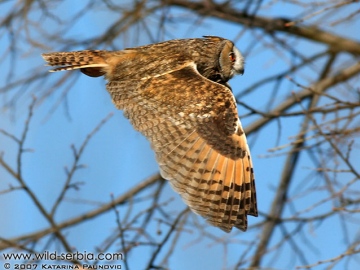Identification Guide
If you have seen pellets please take a look at our guide to Barn Owl pellets.
You'll find a link to the survey form at the bottom of this page
BARN OWL Tyto alba
Views as good as these are very unusual! Barn Owls in dark places will only look white or pale if they are lit-up (e.g. by camera-flash or headlights)
To see what a Barn Owl actually looks like when you see one by chance (in daylight, at dusk and at night) see below.
TAWNY OWL Strix aluco
Flash photography has made these Tawny Owls look quite pale. Unless the owl is lit up by bright lights (e.g. car headlights), Tawny Owls usually appear very dark indeed; often dark brown or a black silhouette. They are usually seen in a tree, or flying to or from a tree and can be found in virtually any landscape that has large trees. Tawny Owls are rarely seen in buildings. Individuals sometimes stand in the road at night. Absent from Ireland.
BEWARE that in bright headlights the underside of a Tawny Owl can look very pale indeed and they are far more common than Barn Owls. If the bird you saw could have been a Tawny Owl, please do not report it on this website.
LITTLE OWL Athene noctua
Unlike the other species shown, Little Owls are frequently active during the day and very much smaller – about the size of two fists. Their undulating flight is also distinctive. They are generally absent from Scotland, Ireland, most of Wales, and most of Cornwall. Little Owls occur mainly in areas of mixed farming.
SHORT-EARED OWL Asio flammeus
A Short-eared Owl may be mistaken for a Barn Owl when in flight as their hunting technique is similar (flying around slowly at low level over open habitats). The main distinguishing feature is the generally darker colouration, particularly the throat and underside of the wing tip, and the carpal or 'wrist' patch. At close quarters the black and yellow eyes are also distinctive. The short 'ear' feather-tufts are often not visible.
LONG-EARED OWL Asio otus
Long-eared Owls are not often seen in Britain as they are generally uncommon and strictly nocturnal. Their main distinguishing features are generally darker colouration and dark carpal patches (similar to Short-eared Owl) and black and orange eyes. In winter, Long-eared Owls are sometimes seen by day in small communal roosts, or singly, in trees or bushes. The long 'ear' feather-tufts are generally not visible in flight and only sometimes visible when perched.
If you are 100% certain that the owl you saw really was a Barn Owl and you don't know where it roosts or nests please complete the Random sighting survey form.
If you do know where it roosts or nests, please complete the Roost or nest site survey form.

